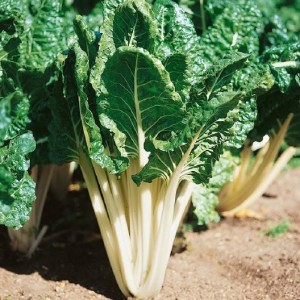Growing Abundant Spinach and Swiss Chard in South Africa: A Comprehensive Guide
Spinach and Swiss chard, with their vibrant green leaves and exceptional nutritional value, are beloved additions to South African cuisine. Whether you’re an experienced gardener or a novice, successfully cultivating these leafy greens in South Africa can be a fulfilling endeavor. In this educational blog, we will guide you through the process of growing spinach and Swiss chard, focusing on the best varieties for each of South Africa’s nine provinces. We’ll delve into everything from selecting the ideal varieties to soil preparation, irrigation, fertilization, pest control, and harvesting. Let’s embark on a journey to become an expert in growing these healthy greens.
The Best Spinach and Swiss Chard Varieties by Province
South Africa’s diverse climates mean that these leafy greens may perform differently from one province to another. Here are the best spinach and Swiss chard varieties for each province:
1. Eastern Cape

Best Spinach Variety: “Matador” Baby Leaf Spinach
Best Swiss Chard Variety: “Lucullus”
Plant Size: Medium
Best Time to Sow: Autumn and Spring
Plant Depth: 1.5 cm
Plant Spacing: 15-20 cm
Row Spacing: 30-40 cm
2. Free State

Best Spinach Variety: “Bloomsdale”
Best Swiss Chard Variety: “Fordhook Giant”
Plant Size: Large
Best Time to Sow: Early Spring and Late Summer
Plant Depth: 1 cm
Plant Spacing: 20-25 cm
Row Spacing: 40-50 cm
3. Gauteng

Best Spinach Variety: “Giant Winter”
Best Swiss Chard Variety: “Rainbow Chard”
Plant Size: Extra Large
Best Time to Sow: Late Summer and Autumn
Plant Depth: 1 cm
Plant Spacing: 25-30 cm
Row Spacing: 50-60 cm
4. KwaZulu-Natal

Best Spinach Variety: “Medania”
Best Swiss Chard Variety: “Bright Lights”
Plant Size: Medium
Best Time to Sow: Autumn and Early Spring
Plant Depth: 1.5 cm
Plant Spacing: 15-20 cm
Row Spacing: 30-40 cm
5. Limpopo

Best Spinach Variety: “Bloomfield”
Best Swiss Chard Variety: “Argentata”
Plant Size: Large
Best Time to Sow: Late Summer and Autumn
Plant Depth: 1 cm
Plant Spacing: 20-25 cm
Row Spacing: 40-50 cm
6. Mpumalanga

Best Spinach Variety: “Savoy Leaf”
Best Swiss Chard Variety: “Lucullus”
Plant Size: Large
Best Time to Sow: Early Spring and Late Summer
Plant Depth: 1 cm
Plant Spacing: 20-25 cm
Row Spacing: 40-50 cm
7. North West

Best Spinach Variety: “Tyee”
Best Swiss Chard Variety: “Fordhook Giant”
Plant Size: Medium
Best Time to Sow: Autumn and Early Spring
Plant Depth: 1.5 cm
Plant Spacing: 15-20 cm
Row Spacing: 30-40 cm
8. Northern Cape

Best Spinach Variety: “Viking”
Best Swiss Chard Variety: “Bright Lights”
Plant Size: Extra Large
Best Time to Sow: Late Summer and Autumn
Plant Depth: 1 cm
Plant Spacing: 25-30 cm
Row Spacing: 50-60 cm
9. Western Cape

Best Spinach Variety: “Nobel”
Best Swiss Chard Variety: “Rainbow Chard”
Plant Size: Medium
Best Time to Sow: Autumn and Early Spring
Plant Depth: 1.5 cm
Plant Spacing: 15-20 cm
Row Spacing: 30-40 cm
Soil Preparation for Spinach and Swiss Chard Success
Before planting these leafy greens, it’s crucial to prepare the soil properly. Spinach and Swiss chard thrive in well-draining soil rich in organic matter. Here’s how to prepare the soil:
1. Test Your Soil
Begin by testing your soil’s pH level. Spinach and Swiss chard prefer a slightly acidic to neutral pH of 6.0 to 7.0.
2. Improve Drainage
Ensure proper drainage by amending the soil with compost or well-rotted organic matter. This helps prevent waterlogged roots.
3. Soil Enrichment
Both spinach and Swiss chard love nutrient-rich soil. Incorporate a balanced fertilizer or compost to provide essential nutrients.
4. Break Up Clumps
Loosen compacted soil to a depth of at least 15 cm to allow the roots to penetrate easily.
Irrigation Frequency for Spinach and Swiss Chard
Spinach and Swiss chard require consistent moisture for optimal growth. Here are some tips for irrigation:
1. Consistent Watering
Keep the soil consistently moist throughout the growing season. Aim to provide about 1 to 1.5 inches of water per week.
2. Mulching
Apply mulch around the plants to retain moisture, regulate soil temperature, and reduce weed competition.
Fertilizer Requirements for Spinach and Swiss Chard
Proper fertilization is crucial for these leafy greens. Here’s a guide:
1. Before Planting
Apply a balanced fertilizer, such as 10-10-10, before planting. Use approximately 1 to 2 pounds of fertilizer per 100 square feet of planting area.
2. Side-Dressing
As spinach and Swiss chard plants grow and develop, side-dress them with nitrogen-rich fertilizer. This encourages leafy growth. Use a nitrogen fertilizer like ammonium nitrate, following package instructions.
Pest Control Throughout the Lifecycle of Spinach and Swiss Chard
Pests can threaten your spinach and Swiss chard crop at various stages. Here are common pests and solutions:
Early Stage (Seedlings)
- Aphids: Monitor young plants for aphids. Use insecticidal soap or neem oil as a natural control if necessary.
Mid-Growth (Vegetative Stage)
- Leaf Miners: Check for leaf miners, which create tunnels in leaves. Remove affected leaves and use row covers to prevent infestations.
Late Stage (Harvest-Ready)
- Slugs and Snails: Protect mature plants from slugs and snails. Use barriers like copper tape or beer traps to deter them.
Common Diseases
- Downy Mildew: This fungal disease can affect the leaves. Plant disease-resistant varieties and ensure proper air circulation.
- Powdery Mildew: Maintain proper spacing between plants and avoid overhead watering to prevent powdery mildew.

Harvesting and Handling Spinach and Swiss Chard
Knowing when and how to harvest these leafy greens is essential for quality and yield:
Harvesting
Spinach and Swiss chard are ready for harvest when the leaves are large enough to eat, typically 4 to 6 weeks after planting. Harvest outer leaves first, leaving the inner leaves to continue growing.
Handling
Gently handle harvested spinach and Swiss chard to prevent bruising. Store them in a cool, dark place or refrigerate for extended freshness.
Best Storage Practices and Transportation
Storage Circumstances
To maintain freshness:
- Store spinach and Swiss chard in the refrigerator at temperatures between 0°C and 5°C.
- Place them in perforated plastic bags to maintain humidity while allowing airflow.
- Avoid storing them alongside fruits that produce ethylene gas, which can accelerate wilting.
Transportation and Handling
When transporting spinach and Swiss chard:
- Use ventilated containers or bags to maintain freshness.
- Keep them cool during transportation to preserve their crispness and nutritional value.
Conclusion: Thriving Leafy Greens in South Africa
Cultivating spinach and Swiss chard in South Africa is a rewarding experience, allowing you to enjoy fresh, nutrient-rich greens straight from your garden. By selecting the best varieties for your province, preparing the soil correctly, providing consistent irrigation and fertilization, and implementing pest control measures, you’ll set the stage for a bountiful harvest of these healthy greens.
Remember, successful cultivation takes dedication and care, but the delicious rewards are well worth the effort. By following the guidance in this blog, you’ll be well on your way to becoming an expert in growing spinach and Swiss chard.
Happy gardening, and may your leafy greens thrive and nourish your plate!

